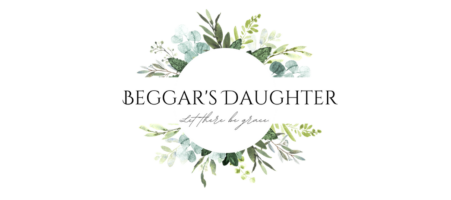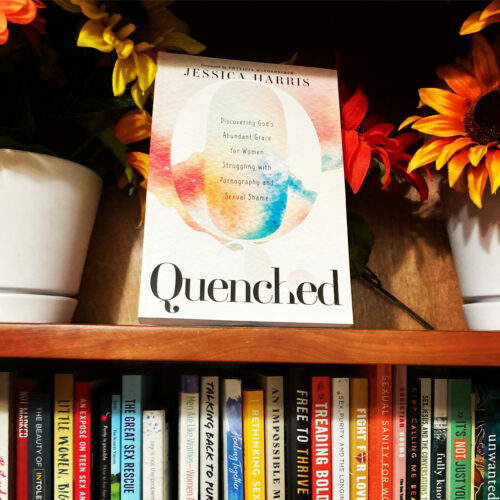Today, I’m reviewing Unwanted: How Sexual Brokenness Reveals Our Way to Healing by Jay Stringer.
As a friendly reminder, as is the case for all of my reviews, I buy these books personally and read them cover-to-cover before I share them with you. No paid endorsements here and no quick skims and half-hearted summaries. The only commission I make is through sharing affiliate links like the one below. If it’s not worth my time and money, it’s not worth yours.
I want to say I’ve met Jay before but honestly, I don’t know. Maybe? I think we follow each other on social media… maybe? At any rate, his is a name I know and am familiar with and the endorsements on this book include people who I do know, like Josh McDowell, Dr. Juli Slattery, and Dr. William Struthers.
When someone like Dan Allender says, “Without rival, the best book on broken sexuality I have ever read” you stand up and take notice.
So, I grabbed a copy. And then I moved, and then I unpacked it and put it on a shelf, forgetting I hadn’t actually read it. After I finished Talking Back to Purity Culture, I perused my shelves looking for a book to fill the gap before my copy of The Great Sex Rescue arrived. (Spoiler alert: that one is next!) I found my forgotten copy of Unwanted and thought, “Might as well.”
Well…
I’m kicking myself for not reading this one sooner. There’s a reason why it has a massive 5-star rating on Amazon.
I’ll be honest though, I was a bit skeptical at first. The idea that we should press in to our sexual struggles, explore them even, sent my conservative spidey senses buzzing. What is this new-age philosophy that says I don’t want to condemn my struggles and instead explore them? Exploring is bad.
My mind painted images of a bright red therapist couch with a monotone voice asking me “so tell me about your childhood.” I worried it was going to be a book full of “of course you’re messed up.”
Skeptic no more.
It turns out, Unwanted lays out a beautiful roadmap of freedom from unwanted sexual behavior through healing.
If your leg is broken, that’s where the pain is going to be. If you just show up to the ER and say, “It hurts” but don’t mention where that isn’t going to be super helpful. If your doctor spends 20 minutes examining your neck and sends you home with pain killers, you may not be in pain, and you may know your neck is fine, but that doesn’t fix your broken leg. Pinpointing our pain helps us find healing and Jay’s theory is that your sexual struggle is just that- a sign pointing to where your pain is.
The book is broken up into three parts. The first explores the question of “How did I get here?” Jay explores common themes he has seen in his years of counseling people who struggle with unwanted sexual behaviors like pornography addiction or buying sex. He addresses things like dysfunctional families and sexual abuse.
He doesn’t do this so the addict can shift blame. Never does he excuse behavior. Instead, he points out certain events that can set us on a crash course for sexual struggles. Think of it a bit like planting seeds. Certain seeds can’t survive in particular climates or soil types while others thrive. The likelihood is you got to where you are because the soil was prepared for that type of seed to take root and flourish.
The second part explores “Why do I Stay?” I feel like this is the question I hear the most. Women trapped in sexual struggles wanting to know why they can’t get out. They’re trying everything but can’t seem to wrestle free. This part in particular was very eye-opening for me, and I even shared about it in my recent post on porn in marriage.
Jay argues that, in many cases, it isn’t sex that’s drawing us to sex. It’s trauma. It’s pain. It’s shame.
Now, I will break here and say that one of my only qualms with this book is the research methodology. As someone who worked as a data analyst, I was a little skeptical about the generalities made in the book. The over 3800 people surveyed were “men and women who sought out nationally and internationally known organizations for guidance in the midst of their sexual brokenness.”
So the pool of respondents was skewed from the offset. It doesn’t include people who have no reservations about their sexual behavior. Instead, it’s already going to lean toward people who feel broken, remorseful, even shamed by their behavior. That can tend to draw out people with sexually abusive or broken pasts as their current behavior is connected to their past trauma.
As I shared some of the book’s concepts with my husband, he would often reply, “But what about the people who do it for pleasure? What about the people who honestly just do it because it feels good and they don’t know any better?”
I think that’s a fair question. No survey is ever going to be able to perfectly capture an entire demographic. It’s just not possible. The existence of a survey itself can even exclude people.
But it’s worth noting that anyone who is “in it for the pleasure” probably isn’t picking up a copy of a book entitled Unwanted. In that sense, Jay has perfectly hit his target audience.
Regardless, he very aptly unpacks the idea that for many of us, the addiction isn’t sex. It’s almost like we’re addicted to being broken.
The third section answers the question “How do I get out of here?” And I love how deeply formative and practical it is. This is not a “read your Bible for 30 minutes a day and install an accountability software on your phone” answer. There is depth here that I have perhaps never seen in another book. Jay talks about how to write a new sexual story, how to live in relationships, and how to thrive in community. He talks about how this takes time and isn’t something you can just fix overnight.
This is, by far, my favorite part of the book.
If you’ve heard me share my story you know that one of the things I emphasize is healing. When I first confessed my struggle to someone, I got a team of people. One person helped confront the issue of the actual behavior in my life. Everyone else focused on answering the question, “Who is Jessica without pornography?”
I didn’t know how to have healthy relationships. I wasn’t emotionally mature. I didn’t have coping skills and mechanisms. I was terrified of intimacy. There were deep wounds in my heart, life, and mind. Tackling pornography wasn’t going to fix them. Pornography wasn’t the issue; it was a bandage covering the deeper issues.
That’s the part I think we often miss as we try to help people stop watching pornography. We have to answer the why. If we want them to truly experience healing and freedom, we have to walk into that why with them. It’s not enough to get them to stop watching pornography.
This book captures that sentiment in a way that is relatable and readable.
Four out of 5 stars
If I gave star ratings (which I don’t really), I would give this book a four out of five for my audience, but definitely a 5 out of five overall.
I already addressed my thoughts on whether the generalities made hold true in a broader scope. But the real reason for taking off a star is that the book largely reads male.
Jay mentions female clients and details female stories and even includes females in some of his statistics, but when it comes to the really powerful, meatier parts of the book, it’s men, men, men. That’s unfortunate because I think the truths he is unpacking and the roadmap he’s laying out is applicable and needed among women as well. I think he would agree; it just didn’t come through well in the writing.
Women are mentioned, almost as an afterthought at times. There is even one point where he shares some statistics from women in his survey and then appears to brush it off like it’s an anomaly he can’t explain. I wish he would have brought in an expert in the field (like Marnie Ferree of Bethesda workshops) who may have been able to shed some light instead of making it seem like women are strange for being different from men in certain ways.
Still, I think it is a powerful book and if you are struggling with unwanted sexual behavior, I encourage you to get it.
One note to the non-struggler
If you are not the one struggling with unwanted sexual behavior, I think you could still benefit from reading through this book. That’s especially true of pastors and counselors because this is a perspective and approach that might go a bit against the grain of how you were trained.
Please keep in mind that books like these are never meant to diagnose other people. The temptation could be, if you’re a parent reading it, for instance, to read about the precursors to unwanted sexual behavior and jump to conclusions about your child or even your own parenting. You may look at your family and think, “Well because we aren’t dysfunctional and there’s no history of sexual abuse, my kids are in the clear” or “My kid is struggling with pornography so I wonder who molested them.”
This is a trap women fall into all the time because for years the narrative was that women who looked at pornography must have been sexually abused. The result of this narrative was that counselors would insist that women must have a history of sexual trauma. If the woman denied this, the therapist would essentially say it must have happened before she can remember. I have had women write to me traumatized and filled with anxiety because their counselors are telling them they must have been abused and just don’t remember it.
That’s not healing.
So, if you read this- struggling or not- don’t take it is a “this absolutely must be true about everyone who ever struggles with this.” There is no book in the world that perfectly captures every single human experience. Instead, Jay explores a perspective I think conservative Christians, upset parents, wounded spouses, and frustrated strugglers are often quick to brush off. We tackle pornography and sexual struggles as “sin”- black and white- plain and simple, and our message is almost always, “Knock it off.”
Unwanted calls us to a more holistic approach. One that may take time and one where you may not see instant results.
Unwanted doesn’t call us to try harder; it calls us to heal, and we all need healing.




